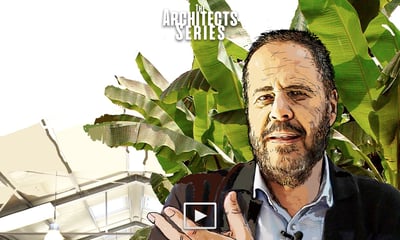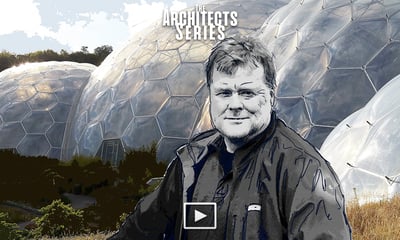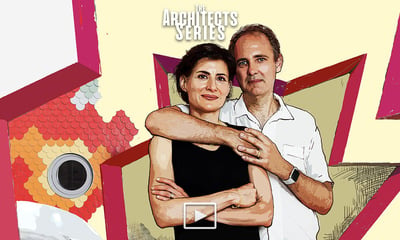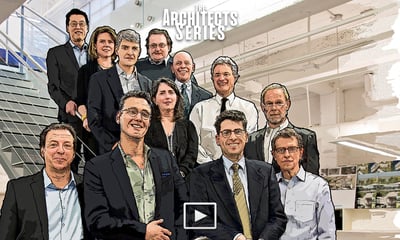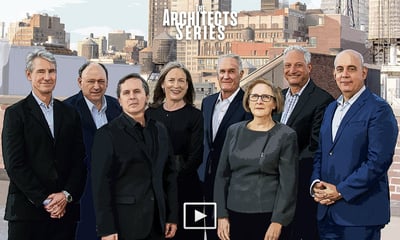Zaha Hadid Architects (ZHA)
Working with the crème de la crème of clients, Zaha Hadid Architects (ZHA) has redefined 21st-Century architecture with a repertoire of projects that have captured the world’s attention. Shape and space intertwine in the structure of its buildings as they evolve out of their surroundings. Each project combines unshakeable optimism for the future with the concepts of connectivity and integration. Having won the highest honors from world-class civic, professional and academic institutions, for four decades Zaha Hadid Architects has been one of the world’s most creative architectural firms. Fully 40 years of research underpin every project; the idea underlying each design is rendered concrete through projects conceived to provide the client city with a new attraction. The quality of the practice’s interior designs is evident in their spatial composition, inviting exploration and promoting interaction between visitor and architecture. The mathematical purity and fluidity of these architectural forms generate environments of great sensory impact, without sacrificing high levels of organizational clarity. Leveraging advances in design, materials and construction technology, ZHA has become a world leader in applying Building Information Modeling (BIM) to building design, construction and management, increasing efficiency while significantly reducing energy consumption and emissions. ZHA strives to provide practical solutions to the decisive challenges of our day, combining innovative digital design methods with environmentally-friendly materials and sustainable construction practices. Every project is a specific assimilation of local context and culture, meeting the previously-established design objectives through an avant-garde engineering approach that enables the architecture to skillfully relate with the surrounding urban fabric. ZHA has worked on some 950 projects worldwide, of which 60 are currently under construction. The company can count on more than 400 passionate, committed, highly-qualified professionals who are faithfully carrying architect Zaha Hadid’s legacy forward.
Patrik Schumacher
Patrik Schumacher is Principal of Zaha Hadid Architects. Since he began his career at the firm in 1988, he has made a key contribution to the firm’s development into the global architecture and design brand that it is today. The German-born architect studied philosophy, mathematics and architecture in Bonn, Stuttgart and London. He graduated in architecture in 1990, and is a Professor at the Berlin Academy of Fine Arts. In 1996, he founded the Design Research Laboratory at the Architectural Association in London, where he continues to teach. In 1999, he completed his PhD at the University of Klagenfurt Institute for Cultural Science. He has been a partner and co-designer of all Zaha Hadid Architects projects since 2003. In 2010, he and Zaha Hadid won the Royal Institute of British Architects’ Stirling Prize for excellence in architecture for their work on MAXXI, the Italian National Museum of 21st-Century Art and Architecture in Rome. Patrik Schumacher currently lectures around the world. He recently held the John Portman Chair of Architecture at GSD Harvard. Over the last 20 years, he has published more than 100 articles in architecture magazines and anthologies. In 2008, he coined the word “parametricism”, and has since published a series of posters promoting this discipline as the new style for the 21st Century. In 2010/2012, he published his architectural theory in two volumes, under the title “The Autopoiesis of Architecture”. Patrik Schumacher is widely acknowledged to be a leading thinker in the fields of architecture, urban planning and design. Cyberspace and the Autopoiesis of Architecture In the near future, cyberspace is where all architectural actions and innovation will unfold. Any choice made within this space involves all three of the distinct parts of a project as defined in Patrik Schumacher’s architectural theory: the organizational project, the phenomenological project, and the semiological project, of which the last is the key element. Since all urban spaces are never merely simple physical containers that transport and channel bodies/objects because they are also always spaces for travel and interaction, an information-rich communicative character becomes the very essence of all cyberspace. Whether real or virtual, designing architectural works implies the development of a spatial/visual language to enhance communicative capacity, making it possible to create environments rich in readable information that promote new forms of social interaction at all levels.
Did you enjoy these contents? Are you interested in receiving professional training credits?
Visit webcast.irisceramicagroup.com for more videos and earn your credits for free
